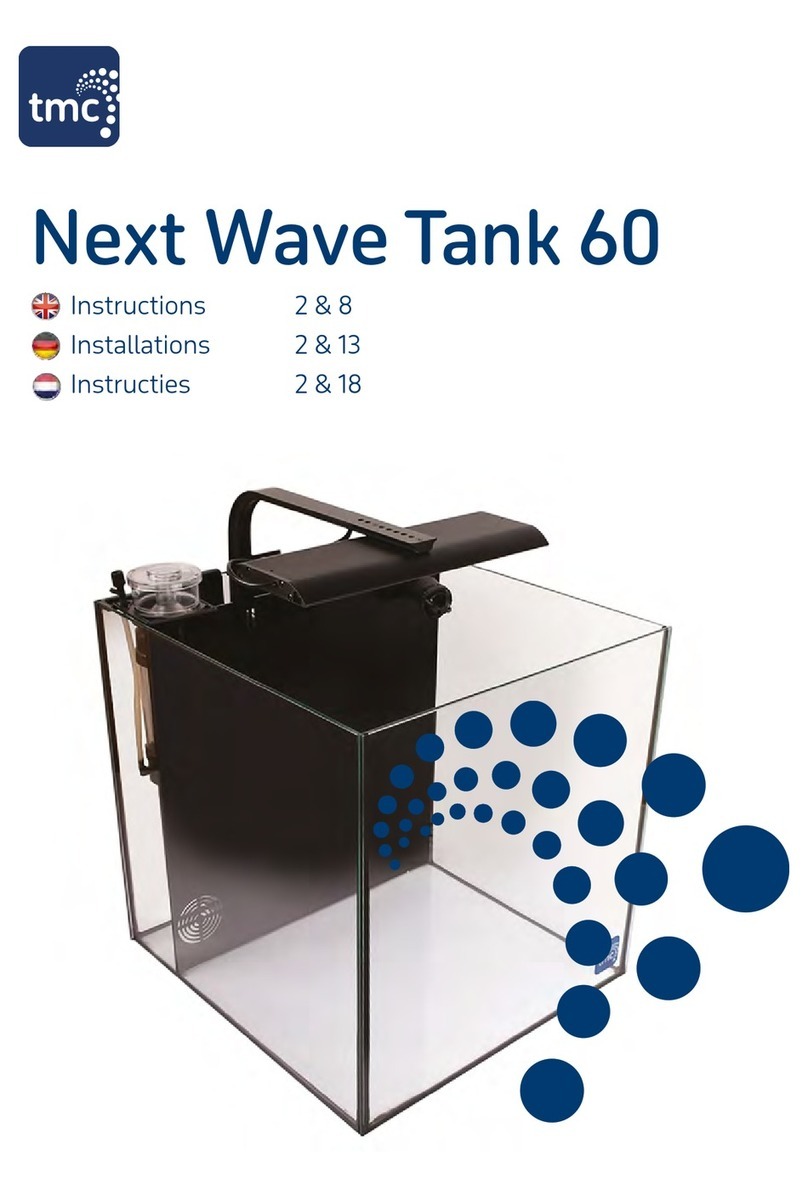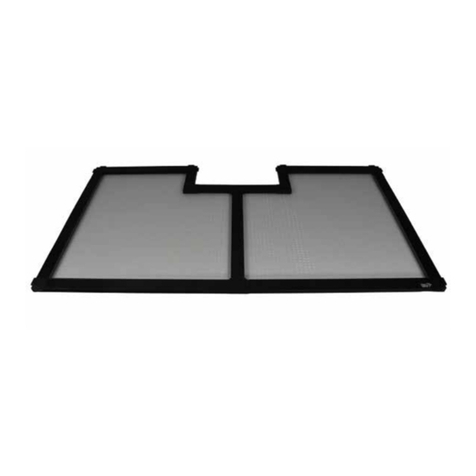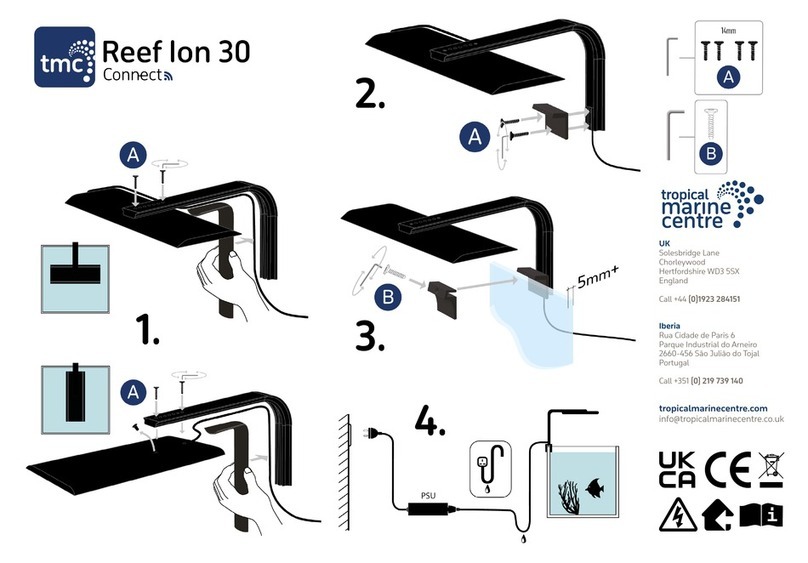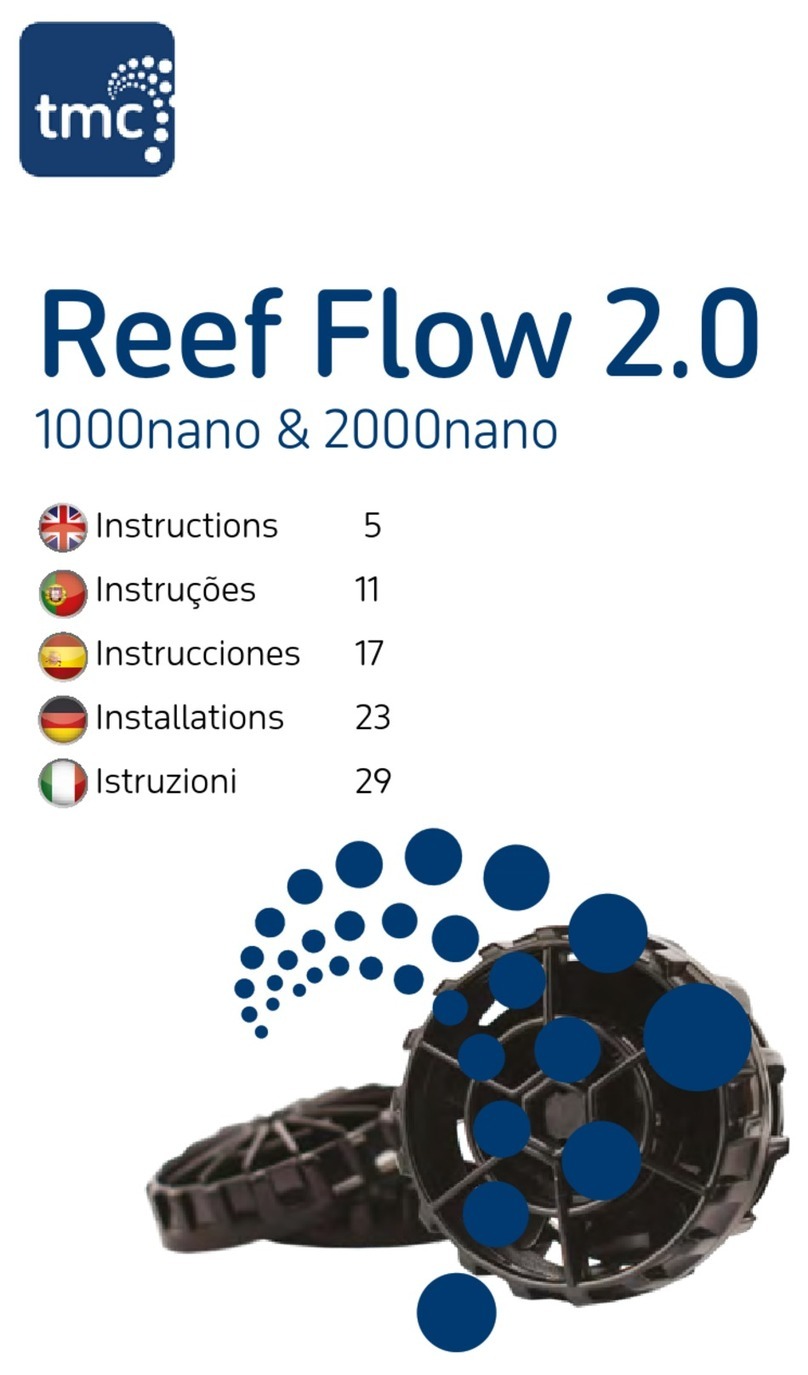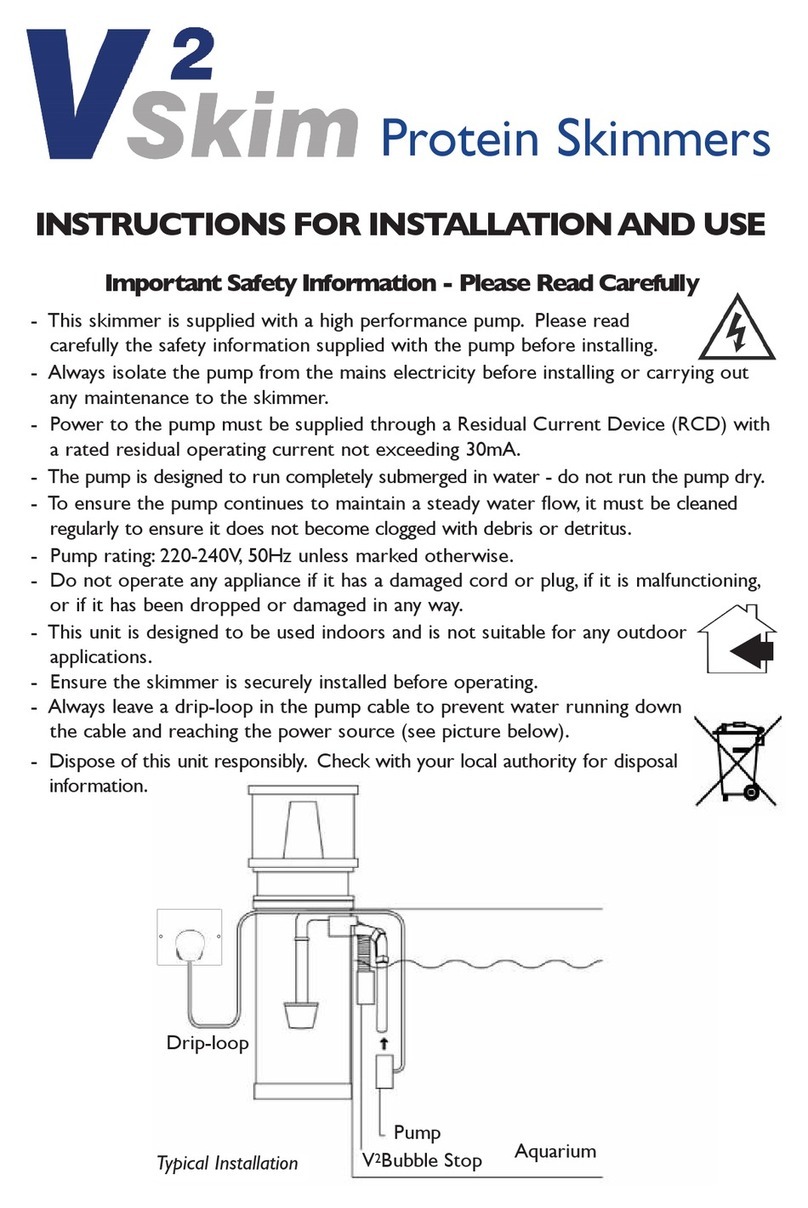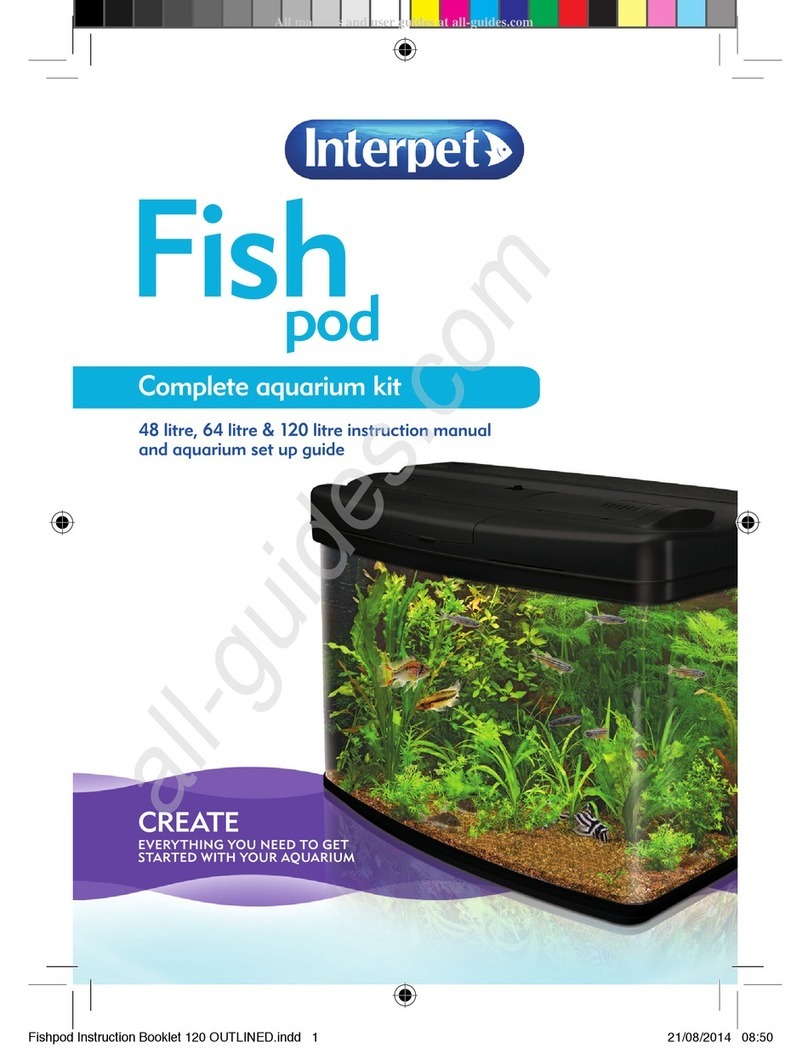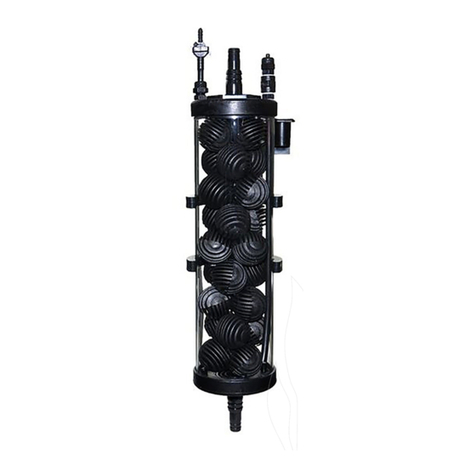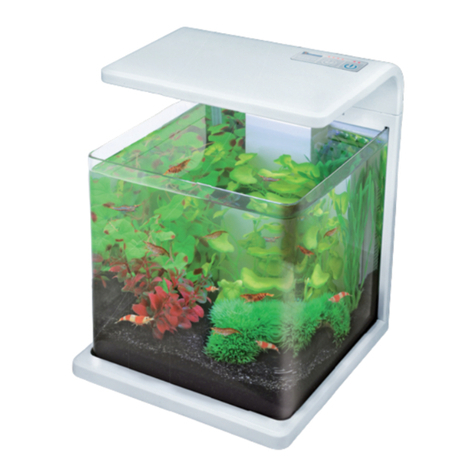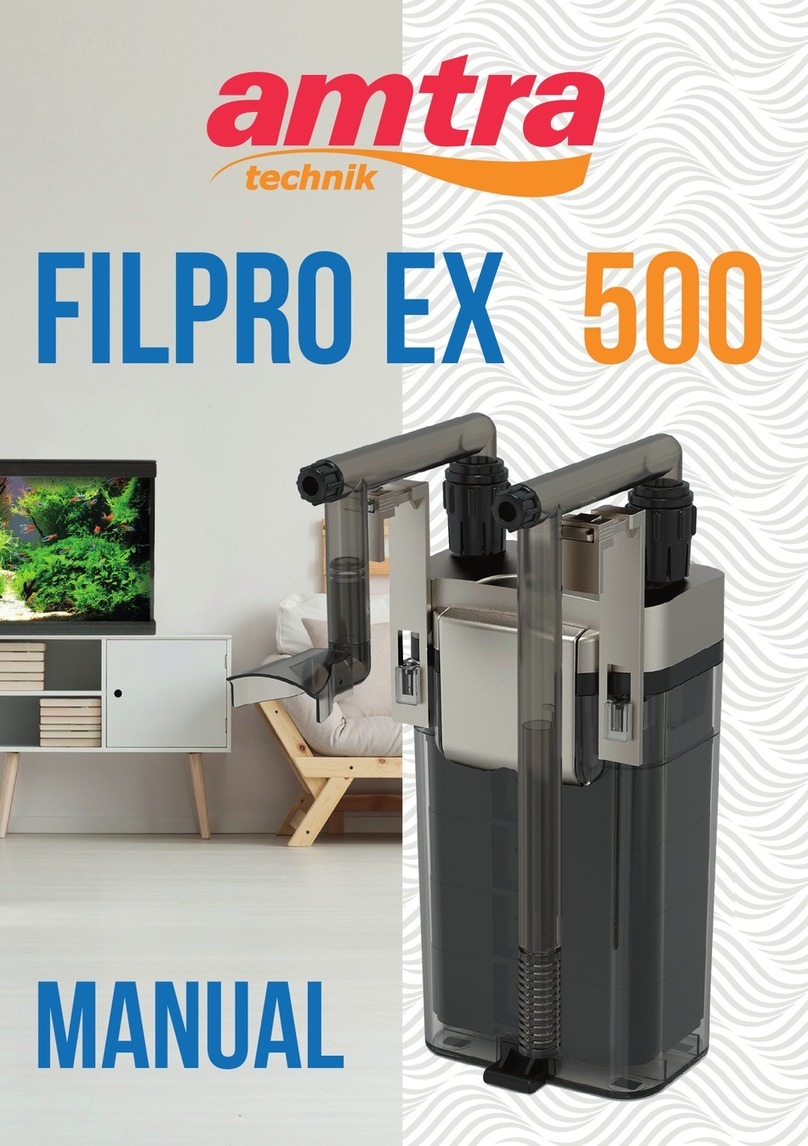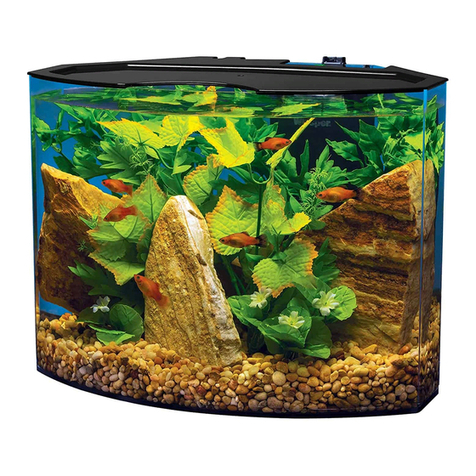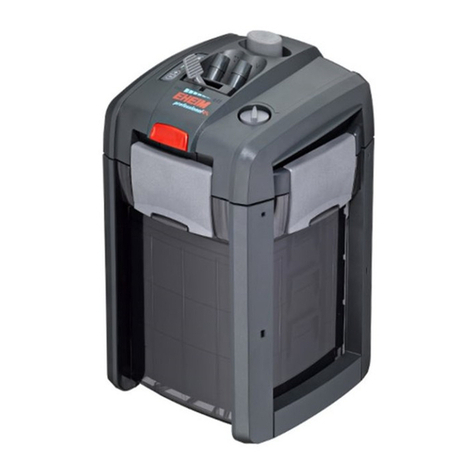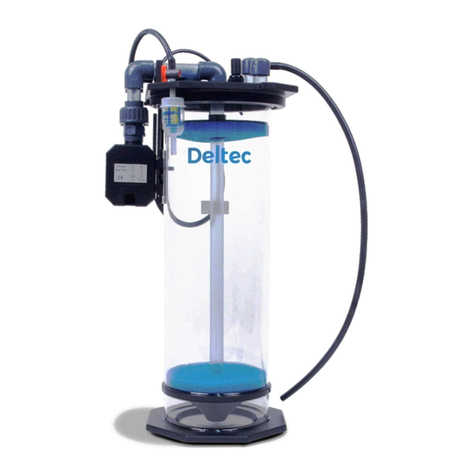TMC Kreisel User manual

GB Instructions
Specialised jellyfish aquariums
ALL MODELS

2
Welcome to the enchanting
world of jellyfish!
The Kreisel aquarium is specifically designed to allow an exciting
entry into the fascinating and mesmerising world of jellyfish
keeping.
This booklet is designed to give you some basic information on
jellyfish and how to care for them.
The simple-to-follow format includes how to set up your Kreisel,
introducing jellyfish to the aquarium and maintaining ideal
conditions to give your jellyfish the best possible start.
IMPORTANT
The saltwater in which your jellyfish will live is very important.
It must be prepared correctly and the right water parameters and
temperature for your chosen species of jellyfish must be reached
and stable before introducing any jellyfish to this Kreisel.
CAUTION
Due to its size, this Kreisel tank is NOT suitable for keeping all
species of jellyfish. Please ensure you thoroughly research the
species requirements, i.e. their size, the required temperature and
water parameters, before introducing them into this tank. If in any
doubt check with your local marine livestock retailer.
Small volumes of water are more sensitive to changes in water
parameters and therefore it is not advisable to introduce more
than one jellyfish at a time. Ensure you allow each jellyfish
to settle in fully, and water parameters are correct, before
introducing another. This may take a number of weeks.

3
Kreisel Instructions
Index
• What is a jellyfish? Page 4
• Jellyfish life cycle Page 6
• General husbandry Page 7
• The nitrogen cycle Page 8
• Cycling your Kreisel Page 9
• Feeding Page 10
• Recommended species Page 11
Kreisel user guide: Parts list Page 12
• Important safety information Page 14
• Parts required for installation (not supplied) Page 16
• Setting up your Kreisel Page 17
• Operation Page 19
• Integrated LED light Page 20
• Introducing jellyfish Page 21
• Safety precautions Page 21
• Maintenance Page 22
• Food and feeding accessories Page 23

4
What is a jellyfish?
Jellyfish, like corals, are animals; they are part of a large group called
invertebrates. Their name means that they do not have a backbone or spinal cord
(made of vertebra).
Jellyfish are simple invertebrates members of the phylum Cnidaria, which
includes creatures such as sea anemones, sea whips, and corals.
Cnidarians invertebrates look very different from one to another but they share
unifying characteristics like:
Radial symmetry: Each has a centre point (mouth) with a body radiating out
from that point. This “radial symmetry” allows jellyfish to detect and respond to
food or danger from any direction.
Flexible tentacles: that help them in catching their prey. Each tentacle
has thousand of microscopic stinging cells called nematocysts. That's the
component of certain jellyfish responsible for causing a sting when their
tentacles make contact with a living organism. Ouch!
The infamous jellyfish stinging is an involuntary reaction to contact, jellyfish
cannot control it, and it’s used to stun their prey before bringing it to their
mouth.
Jellyfish anatomy
Only about 5% of the body of a jellyfish is solid matter; the rest is water! Lacking
brains, blood, or even hearts, jellyfish are pretty simple creatures.
They are composed of three layers:
1. an outer layer, called the epidermis;
2. a middle layer made of a thick, elastic, jelly-like substance called mesoglea;
3. an inner layer, called the gastrodermis.
An elementary nervous system, or nerve net, allows jellyfish to smell, detect light,
and respond to other stimuli. The simple digestive cavity of a jellyfish acts as both
its stomach and intestine, with one opening for both the mouth and the anus.

5
CURIOUS FACT
Jellyfish of the same species will not sting each other!
Reproductive glands or Gonads
Male and female jellyfish have them. In the
male they produce sperm, in the female they
produce eggs
Tentacles
These are the bits
that sting you! They
can be short or long,
depending on the
species
Hood or exumbrella
It’s round and doesn’t
have a brain
Mouth
In the wild jellyfish
feed on all sorts of
creatures. Some of
their favourite food
includes zooplankton,
phytoplankton,
brineshrimp and even
other jellyfish!
Oral arms
they are used to take
food to the mouth

6
Jellyfish life cycle
EGGS
PLANULA
LARVAE
POLYP
STROBILATING POLYP
EPHYRA
ADULT JELLYFISH
or MEDUSA
Jellyfish reproduce sexually. When jellyfish are ready to mate, the male releases
sperm through the mouth opening located on the underside of its bell. The eggs
are fertilized when the female swims through the male’s sperm.
After the eggs of the female jellyfish are fertilized they soon hatch, and free-
swimming “planula” larvae emerge from the female’s mouth or brood pouch and
set out on their own.
A planula is a tiny oval structure the outer layer of which is lined with minute hairs
called cilia, which beat together to propel the larva through the water.
After a brief period floating about in surface waters, the larvae settle to the sea
floor, attaching themselves at one end. There they develop into polyps and begin
to feed and grow.
In spring, some of the polyps start to bud off immature jellyfish known as ephyra
larvae.
The polyp looks like a cylindrical, stalk-like structure at the base of which there is
a disc that adheres to the substrate, and at its top is a mouth opening surrounded
by small tentacles.
The polyp feeds by drawing food into its mouth, and as it grows it begins to bud
new polyps from its trunk, forming a polyp hydroid colony in which the individual
polyps are linked together by feeding tubes.

7
CURIOUS FACT: Some jellyfish are immortal!
There’s a death-defying species of jelly called ‘the immortal
jellyfish’ (or Turritopsis dohrnii) found in the Mediterranean Sea and
in the waters of Japan that’s biologically immortal.
When the polyps reach the appropriate size (which can take several years), the
topmost groove matures the fastest and eventually buds off as a tiny baby
jellyfish, technically known as an ephyra, characterized by its arm-like protrusions
rather than full, round bell.
The free-swimming ephyra grows in size and gradually turns into an adult
jellyfish (known as a medusa) possessing a smooth, translucent bell.
General husbandry
Temperature
Maintain a temperature range of 13-26°C, with adjustments based on
the species and the area of origin. For most Aurelia sp. (Moon Jellyfish), a
recommended temperature falls between 18-25°C. In typical scenarios, this
aligns with the Kreisel's temperature staying a degree or two below the
ambient room temperature, eliminating the need for additional heating. If
temperatures exceed the desired range, consider using a chiller connected to
the Kreisel's INLET/OULET connectors.
Salinity
A salinity range of 25-30ppt for most Aurelia sp (Moon Jellyfish) is
recommended, although some jellyfish can tolerate a broader range.
Other water parameters: pH: Maintain a range of 7.9 – 8.4.
NH₃ (Ammonia): Aim for 0.0 ppm.
NO₂ (Nitrite): Keep it below 0.05 ppm (<0,05ppm)
NO₃ (Nitrate): Maintain levels below 10.0ppm (<10ppm)
PO₄ (Phosphate): Limit to less than 2.0ppm.
Alkalinity: Aim for 7.4 - 8.4 DkH
IMPORTANT: Please consult your local marine livestock retailer for advice
on the specific water parameters, salinity and temperature of your chosen
jellyfish species.

8
When you feed
your jellyfish ...
Nitrifying bacteria
consume ammonia
and convert it into
NITRITE NO₂
Bacteria then consume
nitrite and convert it
into NITRATE NO₃, less
toxic than nitrite
You must remove
NITRATE NO₃ from
the system with
frequent partial
water changes
. ... jellyfish waste
and excess food
decomposes
producing
AMMONIA NH₃
Use a suitable alkalinity buffer to stabilize pH between water changes. Note that
Phosphate (PO₄) and Nitrate (NO₃) can contribute to increased algae growth, so
monitor and manage them through regular partial water changes.
Regularly perform partial water changes to keep water parameters in check.
Water quality should be tested regularly using test kits which are available at
most local aquarium stores.
It is good procedure to test your water quality every few days for at least two
weeks after first adding jellyfish to ensure levels stay within recommended
parameters. Once it is established that the water parameters are stable you can
reduce testing accordingly.
To understand what is required to keep a healthy Kreisel, you need to understand
the nitrogen cycle, where beneficial nitrifying bacteria start building up in your
Kreisel breaking down harmful ammonia (NH₃), into nitrite (NO₂) and then nitrate
(NO₃).
THE
NITROGEN
CYCLE

9
Cycling your Kresiel
When you first start your Kreisel, it will have limited existing nitrifying bacteria
to process the waste from your jellyfish, therefore harmful ammonia (NH₃), and
nitrite (NO₂) levels can increase rapidly. To prevent this sudden build up you will
need to ‘cycle’ the Kreisel which involves growing enough nitrifying bacteria to
process harmful ammonia (NH₃), converting them to nitrites (NO₂) and then to
less toxic nitrates (NO₃).
Cycling your Kresiel, can happen quickly, but it can also take days, sometimes
weeks, so patience is key.
There are a few products on the market which help kick-start the nitrogen cycle
with a dose of nitrifying bacteria, consult your local retailer for further advice if
necessary.
During the cycling process, it is recommended to test the water in your Kreisel
almost every day for ammonia, nitrites and nitrates. This will help you understand
if the cycle is underway and when it is safe to start adding jellyfish.
After a week or ten days, you should see a spike in ammonia concentration,
jumping from zero to a higher number. This is followed by a spike in nitrite,
followed by a spike in nitrate. After your nitrate goes up, your nitrite and ammonia
level should fall back down to zero. Once you have observed this change in water
chemistry your Nitrogen cycle is complete. As a guide, Cycling is achieved when
the following levels are reached:
Ammonia (NH₃),: 0 ppm Nitrite (NO₂): <0,05ppm Nitrate (NO₃): <10ppm
Water testing can be one of the more timely aspects of maintenance, but without
testing, it’s difficult to know what’s going on inside your Kreisel. Every time you
test your water is a chance to correct any imbalances in water chemistry and
improve the overall water quality of your system.
After the cycling process you should be testing your water at least once a week.
Some local aquatic retailers will help you test your water, however, aquarium test
kits are relatively inexpensive and it’s a good idea to start testing your water at
home.
1 Stage 2 Stage 3 Stage Perfect for jellyfish
pH 7.9-8.4 7.9-8.4 7.9-8.4 7.9-8.4
NH₃ + 0 0 0
NO₂ 0 + 0 <0,05ppm
NO₃ 0 0 >10ppm <10ppm

10
Feeding
IMPORTANT: Do not feed jellyfish red plankton.
Jellyfish are mostly carnivorous, consuming zooplankton or small fish. The Aurelia
sp. (Moon Jellyfish) is a recommended species for beginners.
There are various feeding methods with their pros and cons, depending on your
chosen food type (frozen, dry or live). Live food is preferable if available, while
frozen and dry food is convenient but requires more frequent maintenance.
Feeding Live Food
Live baby brineshrimp, while pricier than frozen or dry food, keeps your Kreisel
cleaner in the long run – and your jellyfish will thrive!
Since it’s live, there’s no debris leftover as with frozen and dry foods.
Feeding is simple: just place it in the tank using a pipette, and your jellies will
take care of the rest.
Feeding Frozen and Dry Food
There are different methods of feeding your jellyfish with frozen or dry food,
which mostly come down to personal preference. We suggest the following:
FROZEN FOOD Brineshrimp, cyclops, mysis
DRY FOOD Brineshrimp nauplii, small soft pellets or coral feeds
Feeding Methods
Broadcast Method: This method, though simple, can result in leftover food,
necessitating frequent water changes. Prepare the jellyfish food in a cup, pour
it evenly over the tank, and avoid overfeeding by adding gradually until the
jellyfish stomachs are full. However, be aware that uneaten food may pollute
the tank, requiring more frequent water changes.
Pipette Method: This method minimizes saltwater and food wastage, but there
are reports of reduced jellyfish feeding response over time. If this happens,
consider switching to the broadcast method.
Prepare food in a cup using saltwater from your Kreisel. Use a long nozzle
pipette to suck up and gently spray the food under the jellyfish’s oral arms.
CAUTION:
• Feeding once or twice a day will be sufficient in most cases.
• Always monitor the feeding behaviour of your jellyfish.
• Do not overfeed and always remove any uneaten foods from the Kreisel once
feeding time is over.
• Overfeeding will lead to poor water quality parameters which can be harmful
to the jellyfish.

11
Recommended species*
MOON jellyfish (Aurelia aurita)
Slow and relaxed jellyfish
Maximum number: 2-6 jellyfish
Recommended size: MEDIUM 3-6 cm
Maintenance level: BEGINNER
Easy to set up and
maintain
CANNONBALL jellyfish (Stomolophus meleagris)
Active jellyfish
Maximum number: 3-6 jellyfish
Recommended size: MEDIUM 2-6 cm
Maintenance level: BEGINNER
Easy to set up and
maintain
SPOTTED jellyfish (Phyllorhiza punctata)
Moderately active jellyfish
Specific requirement: Full range light. These
jellyfish are photosynthetic
Maximum number: 2-5 jellyfish
Recommended size: MEDIUM 2-6 cm
Maintenance level: INTERMEDIATE
*The above species list is not comprehensive. For more advice on suitable species
and care, please consult your local marine livestock retailer.
CAUTION:
• Due to the size of this Kreisel tank it is NOT suitable for keeping all species of
jellyfish.
• Please ensure you thoroughly research the species requirements, i.e. their size,
the required temperature and water parameters, before introducing them into
this tank.
• If in any doubt check with your local marine livestock retailer.
SAFE
SAFE
SAFE

12
Kreisel user guide
PARTS LIST
Integrated LED light with touch sensor switch with colour changing modes
Use this button to turn the Kreisel tank ON and OFF and to cycle through the 9 different
lighting colour modes.
Water outlet spray bar
Filtration Chamber with Built-in multi stage filtration system
A– Filter screen basket
B– Filter screen fleece pad (and fleece pad spare)
C – Filter fleece pad
D – Biological filtration (bio ball media bag)
1
3
2
A
B
CDCleaning
cloth
10
Rubber
pads feet
Kreisel 10
ONLY
1
3
4
52
A

13
Kreisel user guide
PARTS LIST
4
5
Energy efficient 5V DC pump delivers the optimum flow for the tank
Chiller INLET/OUTLET Connectors*
*Additional connection fittings and parts may be required (depending on individual installa-
tion requirements).
A
B
CD
Cleaning
cloth
15
1
3
4
5
2

14

15
IMPORTANT SAFETY INFORMATION
Please Read Carefully
CAUTION: Always isolate all electrical appliances from the mains electricity before
installing or carrying out any maintenance to the Kreisel tank.
CAUTION: Power to the Kreisel must be supplied through a Residual Current Device
(RCD - not supplied) with a rated residual operating current not exceeding 30mA.
CAUTION: Thoroughly rinse the Kreisel and filter media, using fresh water and a damp
cloth. Never use soap on any component placed in your aquarium as soap is harmful to
livestock.
•Do not run the water circulation pump dry.
•To ensure the water circulation pump continues to maintain a steady water flow, it
must be cleaned regularly to ensure it does not become clogged with debris or detri-
tus.
•Pump rating: 100-240V, 50/60Hz unless marked otherwise.
CAUTION: Do not operate any appliance if it has a damaged cord or plug, if it is mal-
functioning, or if it has been dropped or damaged in any way.
•This Kreisel is designed to be used indoors and is not suitable for any outdoor applica-
tions.
•Ensure the Kreisel is securely installed on a level surface, capable of supporting the
weight of the tank, before operating.
PLEASE NOTE: This tank must NOT be positioned in direct sunlight as this will lead
to excessive algae growth, or in a location exposed to low temperatures or increased
heat levels i.e. NOT by a radiator.
CAUTION: Always leave a drip-loop in the power cable to prevent water running down
the cable and reaching the power source.
•This appliance is not intended for use by persons (including children) with reduced
physical, sensory or mental capabilities, or lack of experience and knowledge, unless
they have been given supervision or instruction concerning use of the appliance by a
person responsible for their safety.
DISPOSE OF THIS UNIT RESPONSIBLY.
Check with your local authority for disposal information.

16
Parts required for installation
(not supplied)
• Residual Current Device (RCD) with a rated residual operating current not exceeding 30mA
• Bucket or similar container for preparing your saltwater.
• 10 litres/15 litres (depending on model) of saltwater correctly prepared according to the
instructions supplied with your chosen synthetic salt, and at the correct temperature.
USEFUL TIP: We thoroughly recommend saltwater prepared with Tropic Marin synthetic sea salt
(see your local stockist for details and preparation advice).
CAUTION: When mixing salt water DO NOT use tap water as this can contain contaminants.
Reverse Osmosis water should be used.
• Measuring jug or similar vessel (for filling the Kreisel tank with water).
• Thermometer
• Hydrometer
• External Chiller – Depending on individual installation requirements an external chiller,
additional pump and connection fittings may be required.
PLEASE NOTE: The prepared salt water must be at the correct temperature for the Kreisel tank
before adding to the tank.
PLEASE NOTE: Due to various factors such as evaporation, the water level in the Kreisel will
change. Ensure that the water level in the tank and filtration chamber is always closely monitored.
As water evaporates, the salinity level in the tank will also change so ensure that the specific
gravity (SG) of the tank is measured using a hydrometer, and the tank is regularly topped up with
freshwater (Reverse Osmosis water) or saltwater as necessary to reach the correct specific gravity
(SG) and the required water level.
PLEASE NOTE: When topping up the tank with new saltwater, the saltwater must always be
prepared correctly and according to the instructions supplied with your chosen synthetic salt and
any water added to the Kreisel tank must be at the correct temperature.
CAUTION:
• Jellyfish should NOT be introduced to the Kreisel tank until water parameters have been tested
and it is safe to do so.
• Regularly test the water parameters with reliable test kits and consult your local retailer for
further advice if necessary.
• We advised against introducing any substrate or aquarium ornaments into the Kreisel, as such
additions may pose a risk of harm to the jellyfish.

17
Setting up your Kreisel
Choose a suitable location
This Kreisel is designed to be used indoors and is not suitable for any outdoor applications.
Ensure the Kreisel is securely installed on a level surface, capable of supporting the weight of
the tank, before operating.
PLEASE NOTE: This tank must NOT be positioned in direct sunlight as this will lead to
excessive algae growth, or in a location exposed to low temperatures or increased heat levels
i.e. NOT by a radiator.
• Remove the Kreisel from the packaging;
• Remove the Kreisel’s contents from the tank;
• Remove the filtration pads (B and C) and bio ball media bag (D) from the filtration chamber;
• Ensure that the filtration media is removed from any plastic packaging, gently rinse the
filtration media (B,C and D) in freshwater to remove any dust.
NOTE: take particular care when removing the bio ball media bag (D) from the Kreisel.
Positioning the filtration media
• Position the rinsed filter media in the Kreisel tank as per diagram;
• Place the Biological filtration bio ball media bag (D) back in the filtration chamber.

18
• Place the filter fleece pad folded in the filtration chamber, making sure there is enough space for
the filter screen basket (A)
• Replace the filter screen basket (A)
• Carefully pour the pre-prepared saltwater into the Kreisel tank, to the water level indicated
ensuring that you do not overfill
PLEASE NOTE: The prepared salt water must be at the correct temperature for the Kreisel tank
before adding to the tank.
PLEASE NOTE: Due to various factors such as evaporation, the water level in the Kreisel tank will
change. Ensure that the water level in the tank and filtration chamber is always closely monitored.
As water evaporates, the salinity level in the tank will also change so ensure that the specific
gravity (SG) of the tank is measured using a hydrometer, and the tank is regularly topped up with
freshwater (Reverse Osmosis water) or saltwater as necessary to reach the correct specific gravity
(SG) and the required water level.
PLEASE NOTE: When topping up the tank with new saltwater, the saltwater must always be
prepared correctly and according to the instructions supplied with your chosen synthetic salt and
any water added to the Kreisel tank must be at the correct temperature.
USEFUL TIP: Add the prepared saltwater to the Kresiel slowly via the filtration chamber as this
will reduce the chances of any air bubbles entering the main display area of the Kreisel.
CAUTION: Jellyfish should NOT be introduced to the Kreisel tank until water parameters have
been tested and it is safe to do so. Regularly test the water parameters with reliable test kits and
consult your local marine livestock retailer for further advice if necessary.
Please note that the Kreisel
must be filled with water
up to the specified level,
and this includes filling the
filtration chamber.
A B
C

19
Using a chiller
The Kreisel tank has INLET/OUTLET connectors (5) on the back of the tank allowing connection to
an external chiller (not included). To connect an external chiller to the Kreisel tank, please follow
the diagram below.
Operation
Once the Kreisel tank is full of water, plug in the power supply unit and switch on.
Once switched on, water will be drawn into the filtration chamber via the water inlet (0) and will
pass through the multi-stage filtration (3) and will return back into the tank via the water outlet
spray bar (2).
CAUTION: To avoid any operating problems, always ensure that the water inlet (0), water outlet
spray bar (2), outlet tubing and water circulation pump (4) are always clean and free of blockages.
3
4
4
52
2
3
4
52
0 0
PLEASE NOTE: An additional pump and connection fittings may be required (depending on the
individual installation requirements of your chosen external chiller and its proximity to the Kreisel).
CONNECTION
WITHOUT CHILLER
CONNECTION WITH
CHILLER
5
5
2
4

20
Integrated LED light
The Kreisel integrated LED lighting is designed for jellyfish. It provides a gentle, diffused glow to
showcase the jellyfish and enhance their visibility.
The Kreisel is equipped with a high-quality multicolour LED light source capable of producing a
wide range of colours.
To change the lighting mode:
• Touch the button on the top of the Kreisel lid
• The light mode will change with each touch of the
button in a cycle
• There are nine colour modes to choose from:
Kreisel 10
1. Red
2. Green
3. Blue
4. Warm White
5. Yellow
6. Pink
7. Light Blue
8. Cool White
9. Colour Changing
OFF
Kreisel 15
1. Warm White
2. Colour Changing
3. Red
4. Green
5. Dark Blue
6. Light Blue
7. Yellow
8. Pink
9. Cool White
OFF
Kreisel 10L
Kreisel 15L
Table of contents
Other TMC Aquarium manuals

TMC
TMC Reef Tide s Series User manual
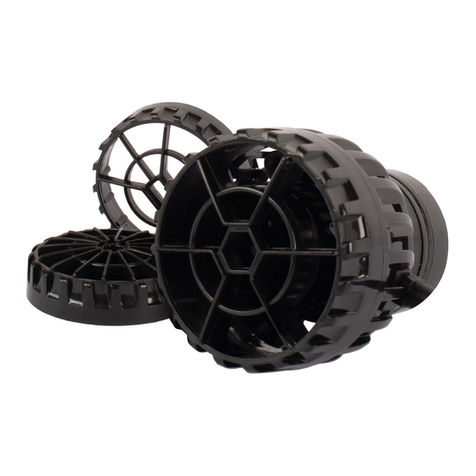
TMC
TMC Reef Flow 2.0 User manual
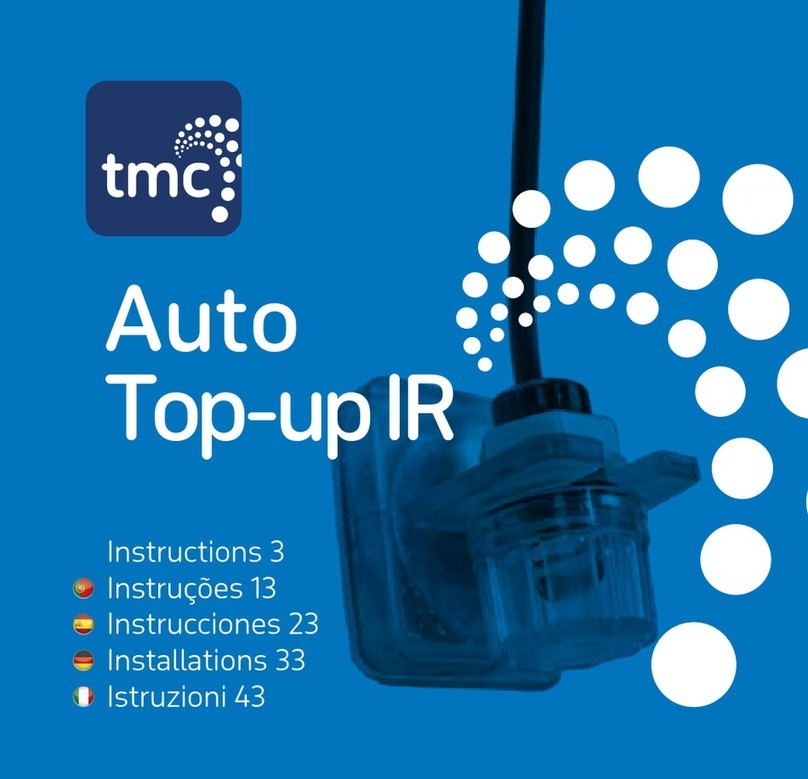
TMC
TMC Auto Top-up IR User manual
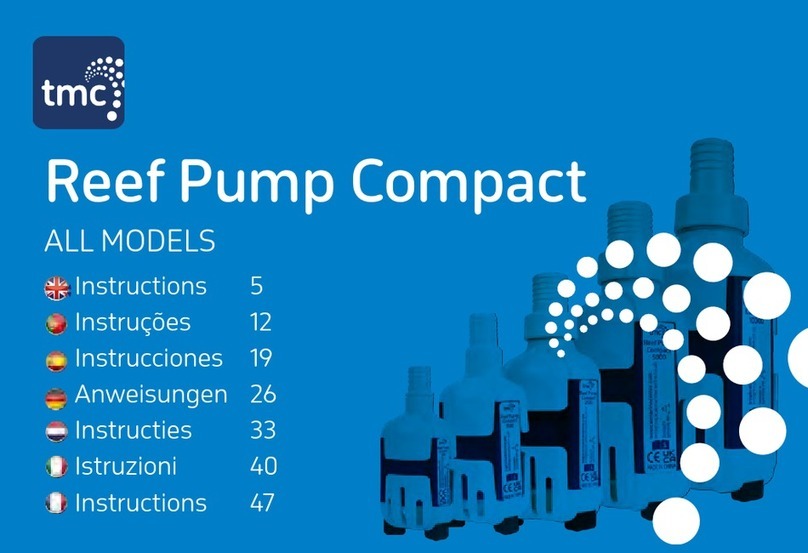
TMC
TMC Reef Pump Compact 500 User manual
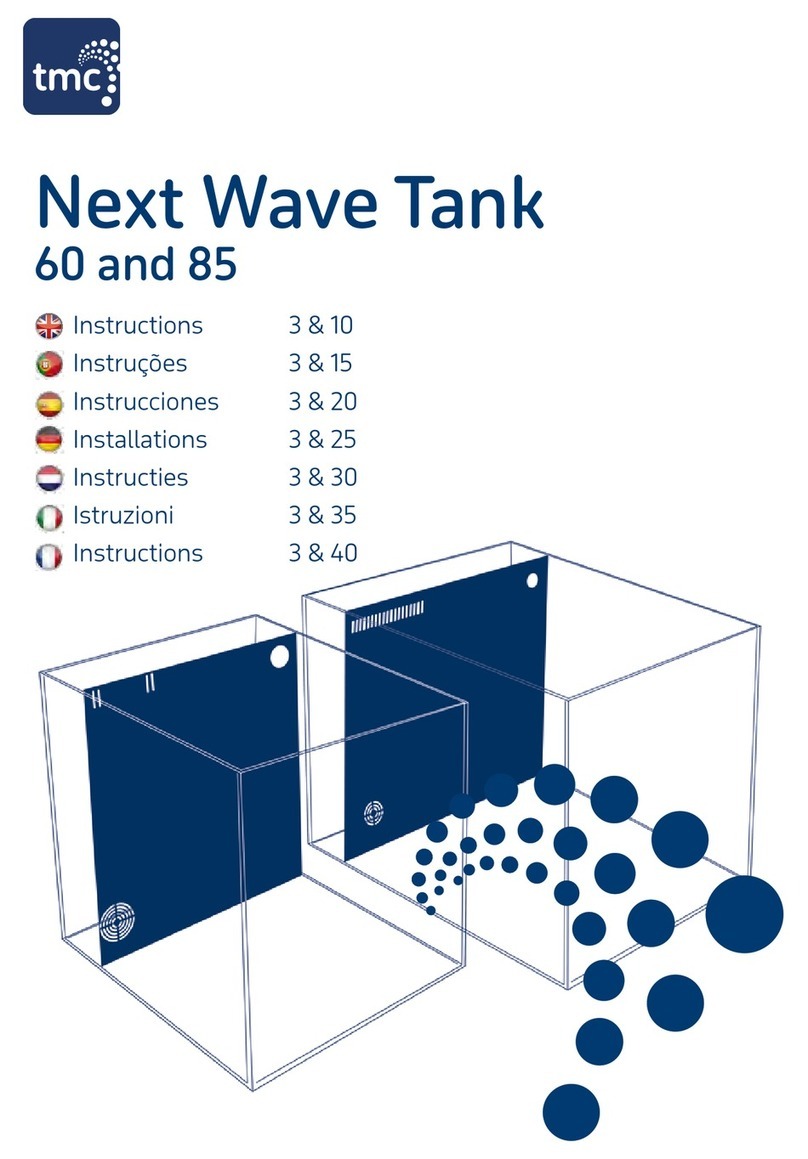
TMC
TMC Next Wave Tank 85 User manual
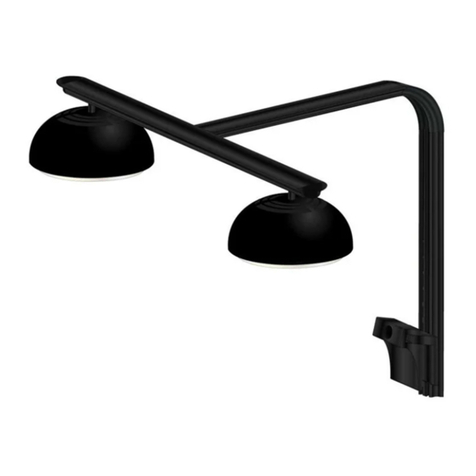
TMC
TMC Reef Photon Operating instructions

TMC
TMC Reef Skim 100nano User manual
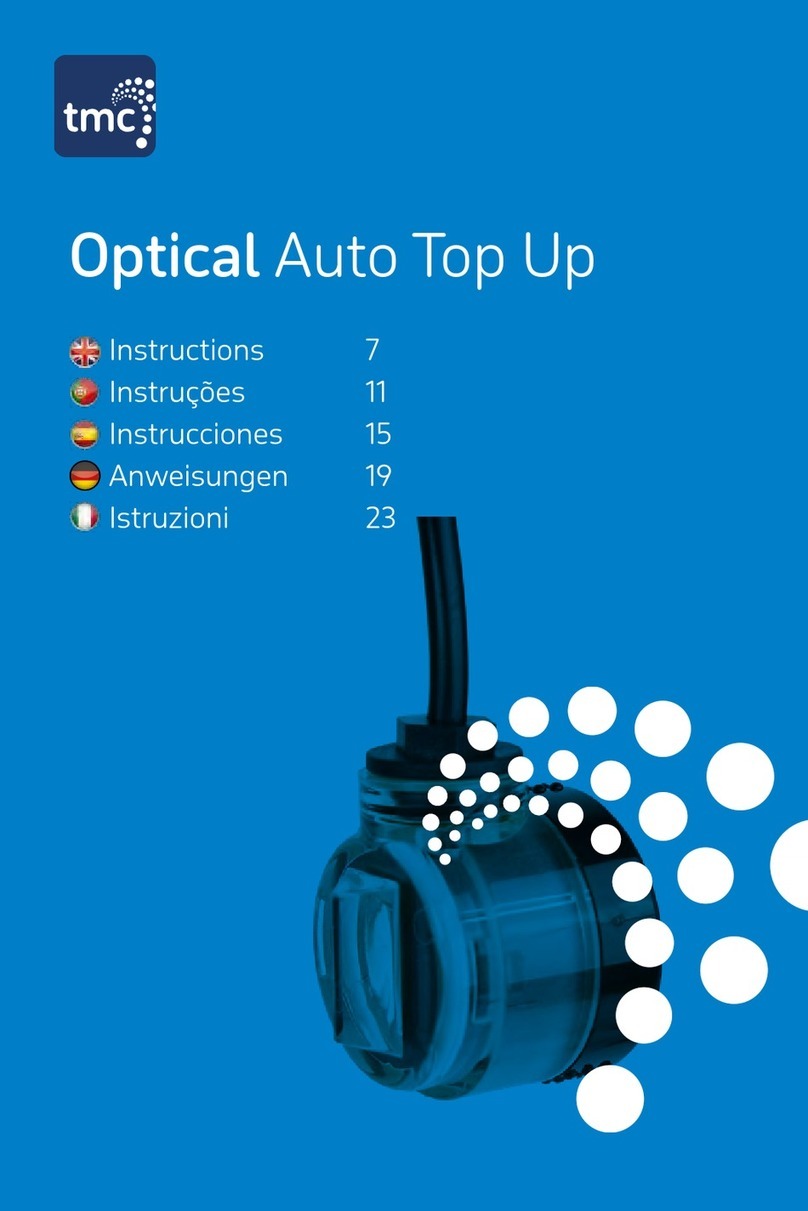
TMC
TMC Optical Auto Top Up User manual
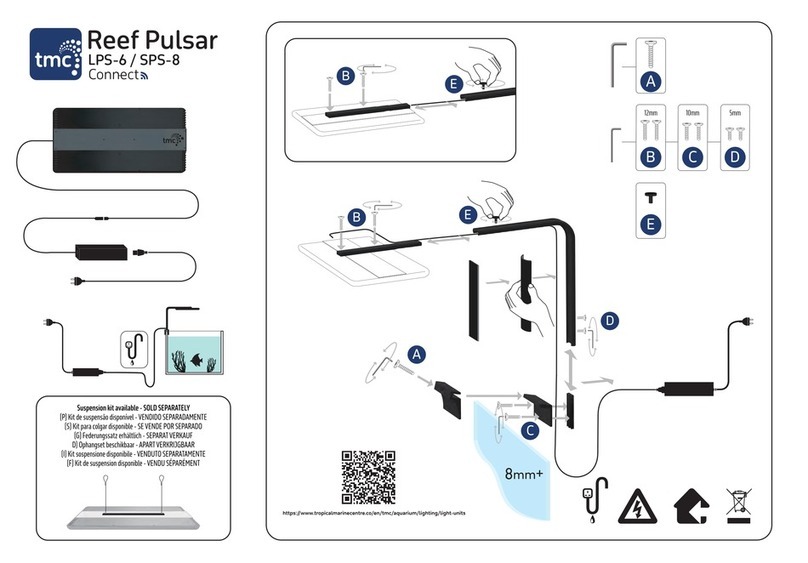
TMC
TMC Reel Pulsar Connect LPS-6 User manual

TMC
TMC REEF-Fill Compact User manual
Popular Aquarium manuals by other brands
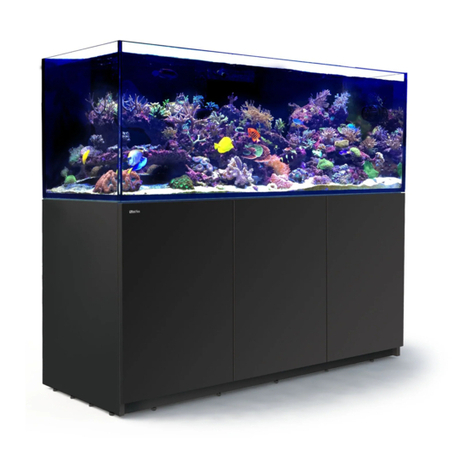
Red Sea
Red Sea REEFER XXL LED Assembly manual
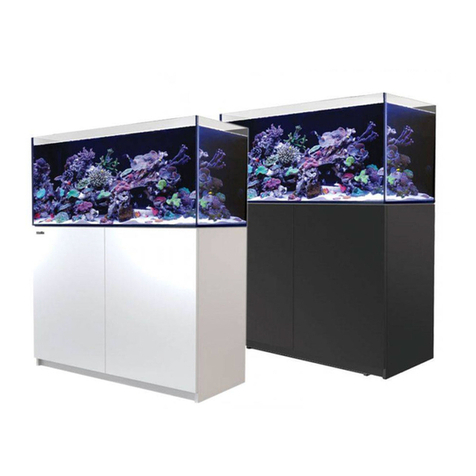
Red Sea
Red Sea REEFER 350 G2 Assembly manual
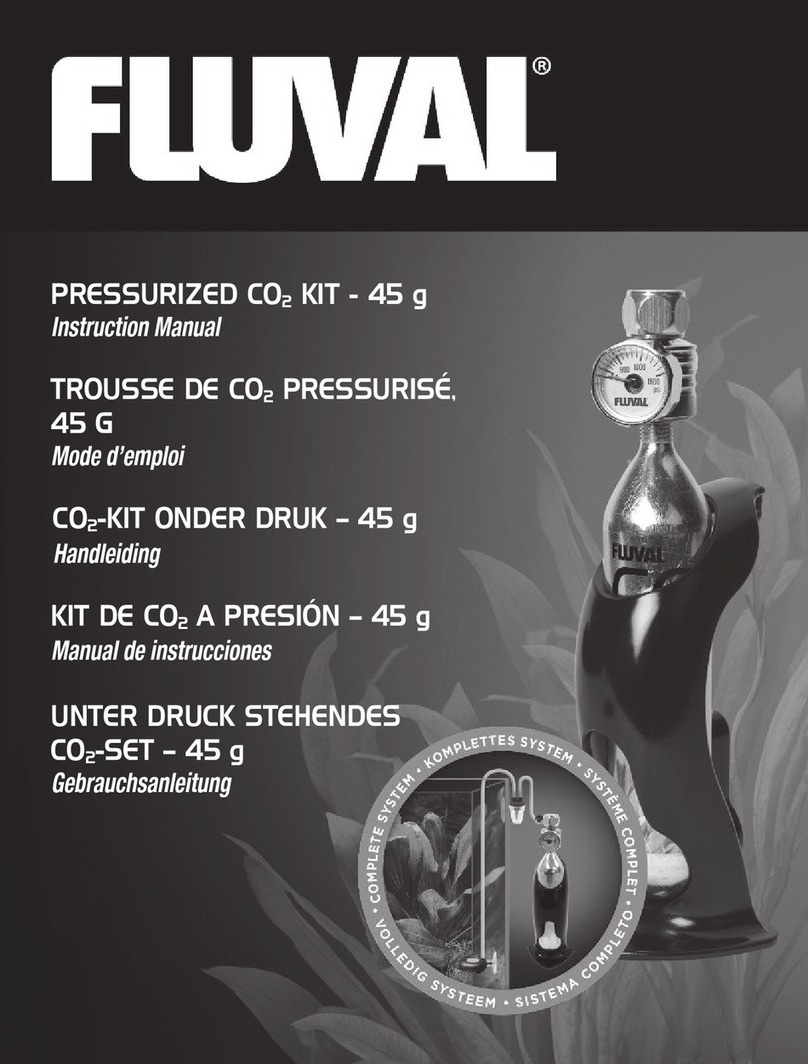
Hagen
Hagen FLUVAL 17554 instruction manual

Sicce
Sicce Shark ADV instruction manual
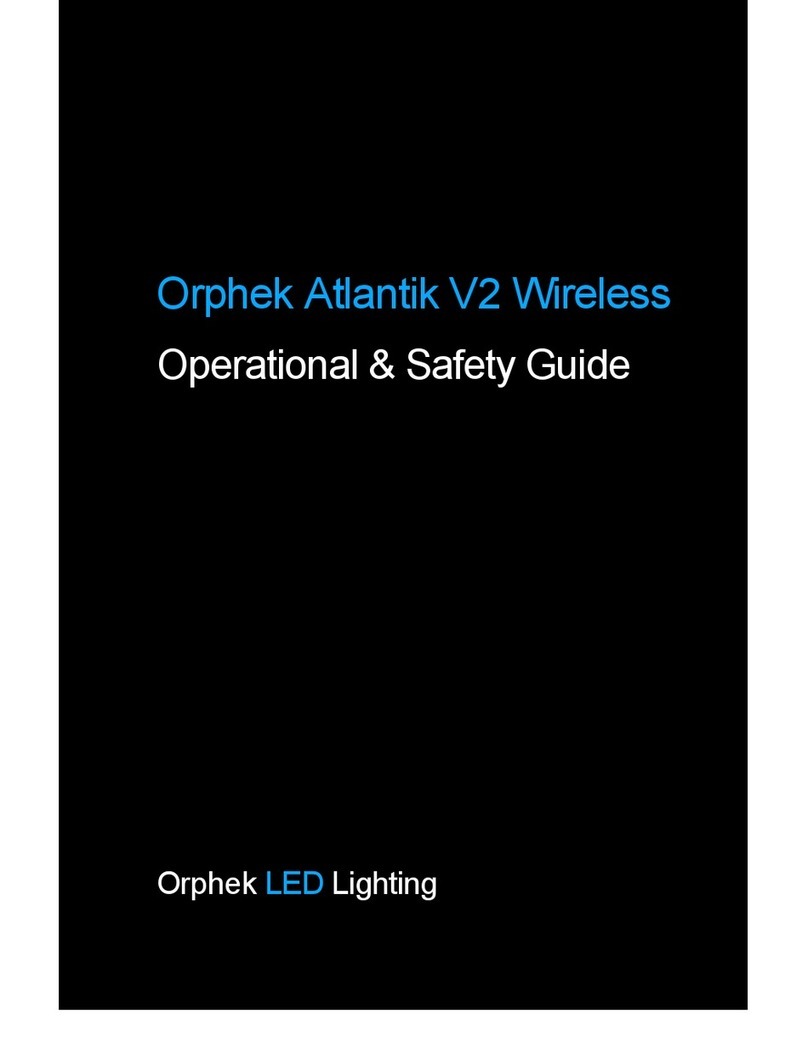
Orphek
Orphek Atlantik V2 Wireless Operational & Safety Guide

TMC Aquarium
TMC Aquarium AquaRay AQUA RED FLEXI-LED Instructions for installation and use
